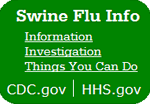Staff Bibliography |
|
Title:
Figure Content Analysis For Improved Biomedical Article Retrieval.
Author(s):
You D, Apostolova E, Antani S, Demner-Fushman D, Thoma GR.
Institution(s):
1) National Library of Medicine, National Institutes of Health, Bethesda, MD 20894
Dept. of Computer Science and Engineering, The State University of New York, Buffalo, NY 14260
College of Computing and Digital Media, DePaul University, Chicago, IL 60604
Source:
Proceedings of SPIE Electronic Imaging Science and Technology, Document Retrieval and Recognition XVI. January 2009;7247:7247 0V(1-10).
Abstract:
Biomedical images are invaluable in medical education and establishing clinical diagnosis. Clinical decision support
(CDS) can be improved by combining biomedical text with automatically annotated images extracted from relevant
biomedical publications. In a previous study we reported 76.6% accuracy using supervised machine learning in
automatically classifying images, by combining figure captions and image content to find clinical evidence. Image
content extraction is traditionally applied on entire images or on pre-determined image regions. Figure images in articles
vary greatly in modality and content, which limits the benefit of whole image extraction beyond gross categorization for
CDS. However, image text and overlaid annotations identify the regions of interest (ROI) on the image that are
referenced in the caption or discussion in the article text. We have previously reported 72.02% accuracy in text and
symbols localization but in that experiment we did not exploit the referenced image locality.
In this work we combine article text analysis and figure image analysis for localizing pointers (arrows, symbols) to
extract ROI pointed that can then be used to obtain meaningful image content and associate it with the identified
biomedical concepts for improved (text and image) content-based retrieval of biomedical articles. Biomedical concepts
are identified using National Library of Medicine’s Unified Medical Language System® (UMLS) Metathesaurus. Our
methods report an average precision and recall of 92.3% and 75.3%, respectively on identifying pointing symbols in
images from a randomly selected image subset made available through the ImageCLEF 2008 campaign.
Publication Type: CONFERENCE
More about this article:
Full Text (PDF)









